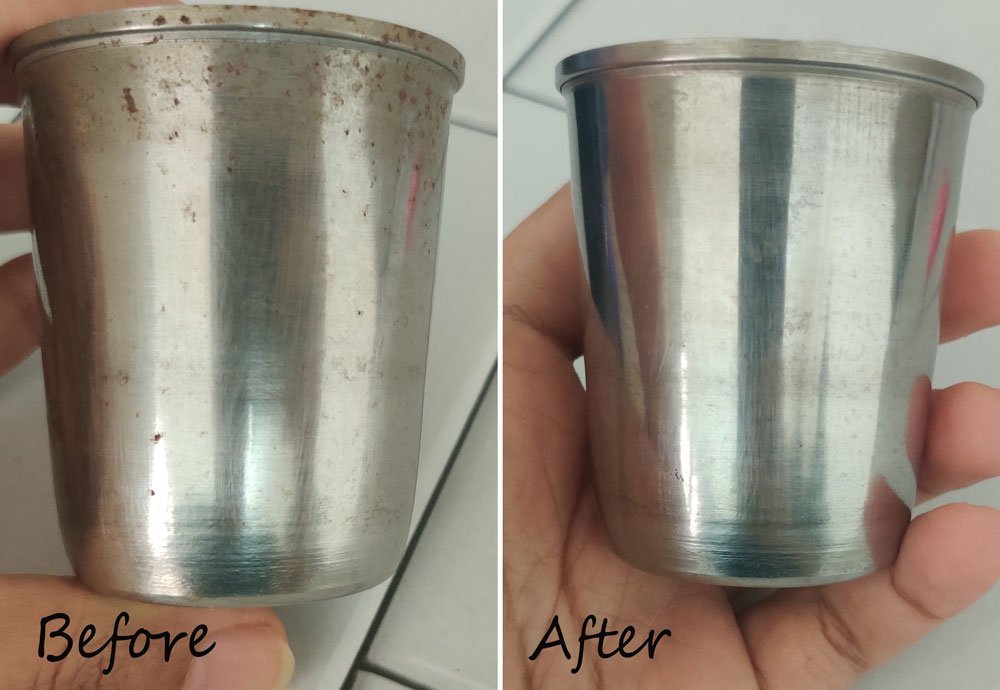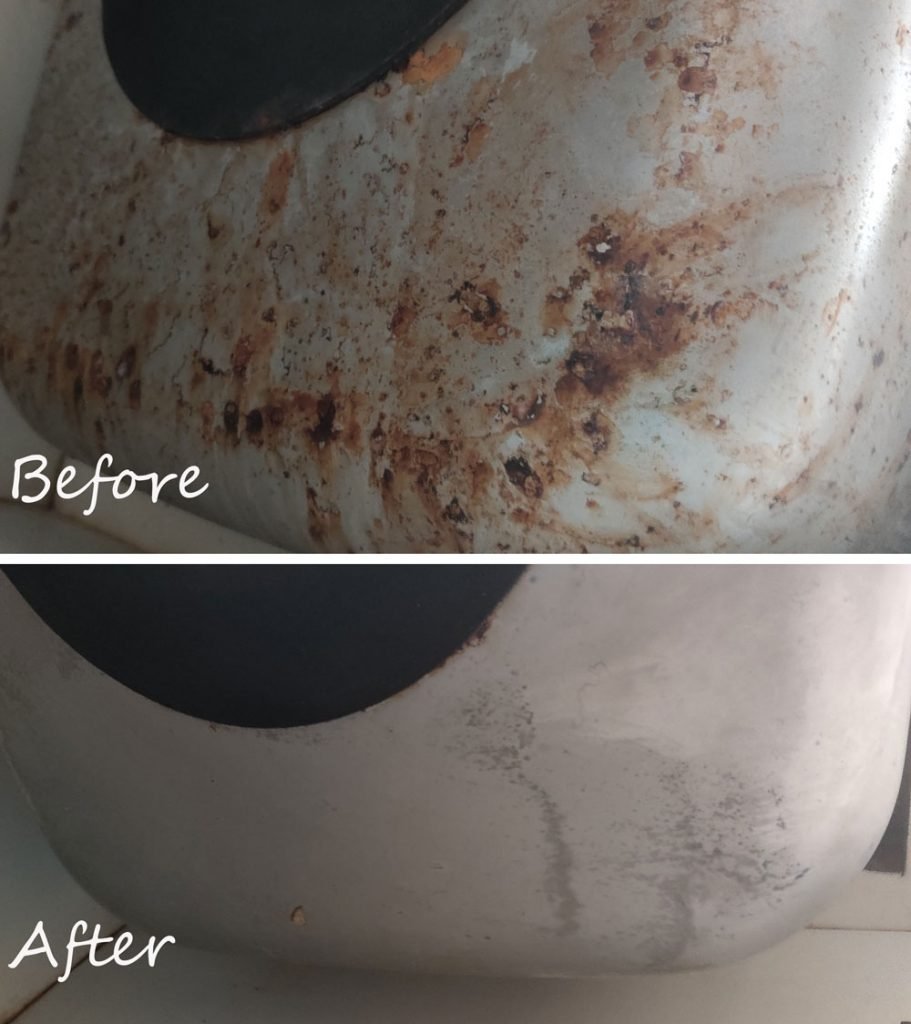From utensils to sinks, stainless steel is ubiquitous in an Indian homes. Unfortunately, many of the stainless steel fixtures, especially the ones nearby the sink rust due to constant exposure to moisture and chemicals. Let us explore some of the methods that help remove rust from stainless steel.
What Is Rust?
Stainless steel is an alloy of iron, carbon, chromium, magnesium, and other elements. Though chromium acts as a protecting layer, often, due to constant exposure to salt, moisture and chlorine, it wears off, exposing the layers of iron. When iron comes in contact with air, it turns into red iron oxides, which is rust.
Initially, iron stays just at the surface level. But, if you don’t act immediately to get rid of that rust, it will start corroding further into the metal, resulting in irreversible pitting or the metal as a whole may just corrode off.
Causes of Rust On Stainless Steel
As mentioned, chromium reacts with air to form a protective layer of chromium oxide. This layer wears off due to various factors. They are mechanical abrasion using steel wools; constant exposure to moisture; chemical cleaners and exposure to salt and chlorine.
How To Prevent Rust?
Preserving the protective layer of chromium oxide is the first step to preventing rusting of stainless steel. For this, ensure that the areas vulnerable in your home to rusting are not exposed to constant moisture. Leaky sinks are the number one cause of rusting of stainless steel fixtures under the sink. You could also consider applying a thin layer of olive oil on such vulnerable spots so that air, salt, and other elements don’t affect them.
Methods That Work To Remove Rust From Stainless Steel
Let us now explore some of the methods that positively work to remove rust from stainless steel. These work best on surface-level rust. If rust has corroded deeper, you will find black pittings on the surface. Unfortunately, that can’t be removed using any cleaners.
Baking Soda+salt
Baking soda and salt can be quite useful for mild rust on utensils, knobs and other stainless steel surfaces. Simply take an equal quantity of baking soda and salt, add water to make it a thick paste and rub it on the stainless steel surface using an old toothbrush. Ensure that you rub in the same direction as the grains on the stainless steel, else, it will result in unsightly scratches on the surface.
We tried this method on an old stainless steel glass that was found discarded inside a cabinet, and it worked pretty well.

Vinegar+salt
Just like baking soda, vinegar too is a useful reagent for getting rid of rust. Vinegar being acidic reacts with rust, which is alkaline to get rid of it. Salt provides the necessary abrasion to get remove the rust from the surface. This too is a method that works well on milder rust that has just affected the surface level.
Oxalic Acid
Oxalic acid is slightly stronger than acetic acid and is an effective chemical that removes rust. It is a white powdery chemical that looks like common salt. You can buy them from a hardware shop or on Amazon.
Simply add water and make a paste of oxalic acid. Then, rub it into the rusted surface using Scotchbrite or an abrasive scrub ( avoid steel wool). It requires a lot of elbow grease. And if the rust is stubborn, you may have to apply oxalic acid paste and leave it for a few hours.

This method works on rusts that have penetrated a bit deep from the surface. But, it won’t help remove the pittings. Neither will it be useful if rust has penetrated deep and corroded from within. It is also an effective method for cleaning rust stains on clothes.
Many websites recommend using WD-40 for removing rust. However, in our experience, we found oxalic acid to be better. WD-40 wasn’t quite effective on stubborn rust, as many claims.
Related reading: How To Remove Hard Water Stains From Taps?
How To Avoid Pitting on Stainless Steel Surfaces?
Black pittings occur when the chromium oxide layer reacts with salt and chloride. It is common not just on stainless steel fixtures, but also on stainless steel utensils. This is why cookware manufacturers advise against adding salt to cold water in a stainless steel utensil. Instead, you should wait till the water starts boiling so that there won’t be enough oxygen to facilitate the reaction between chromium oxide and salt to create the pittings.
To avoid pittings on stainless steel fixtures, ensure that it doesn’t get exposed to a saline environment. If that is something you can’t help with, apply a thin layer of oil to protect it.
Best Method To Remove Rust From Stainless Steel Sink

Sinks are quite prone to rusting as it is constantly exposed to moisture, salt and other elements. It is not just the side where you keep the utensils, but also the area under the sink that is prone to rust.
First of all, fix any leaks in and around your kitchen sink. Then, to remove the rust, scrub it gently using a paste of oxalic acid. It may require a bit of elbow grease, depending on how bad the rust is. But, it is pretty effective if the rust has not penetrated and corroded deeply.
